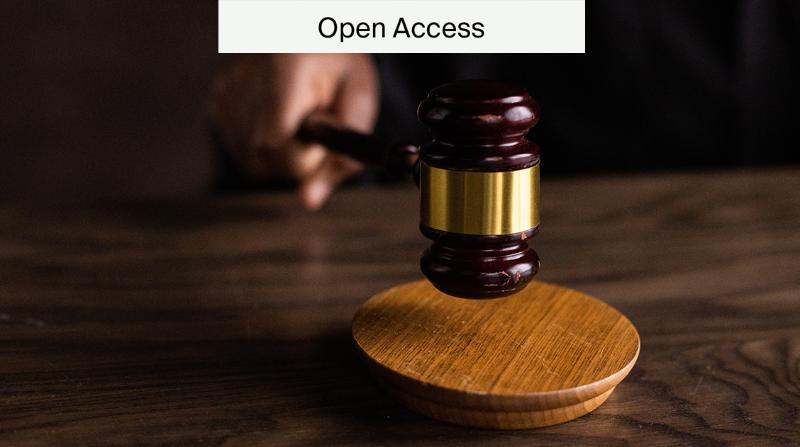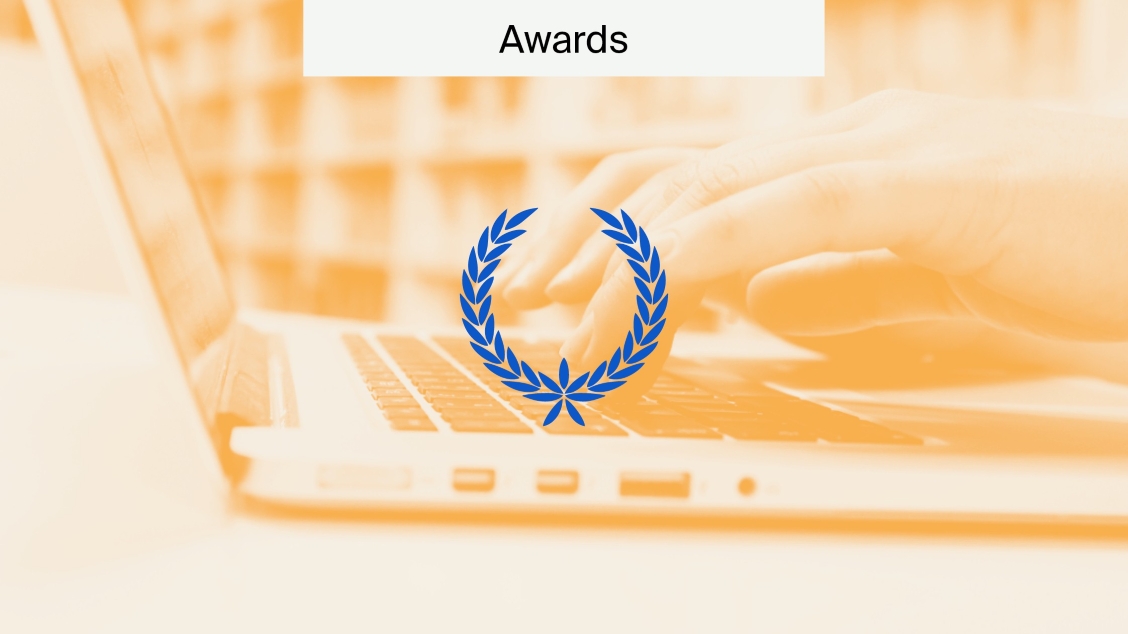
Open Access Copyright and Creative Commons Licenses
Copyright plays a big role in Open Access publishing. After all, it’s the copyright holder who decides whether access is open or restricted. Here, we delve into the details of copyright in Open Access work, specifically to help you to understand the different Creative Commons licenses that are available.
Creative Commons licences define the rights of both the author and user when accessing material, specifically relating to copying, distributing, and elaborating on the work.
The value of Open Access
The freedom and the power the Internet provides us allows for the communication of scholarly research to be updated through the Open Access model. It is ideal for tackling global challenges like climate change and cancer research that require urgent global attention. This is because Open Access makes vital information accessible to all readers and researchers and brings together scholars from across the world.
Considering that 85% of the world’s population live in low-to-middle-income countries, removing financial barriers to research is a necessity. This ensures that vital information and cutting-edge insights can inform national strategies regardless of financial situations. In practice, this means saving lives and improving quality of life.
For Open Access to work effectively, it needs to be correctly copyrighted and licensed.
Why is copyright important?
In short, copyright protects your original works. This encompasses anything from an academic paper to a musical composition. So, if your work is copyrighted, it safeguards your creations from being used or copied without your permission.
Copyright ensures that your work belongs to you, so only you can make money from it and control its usage. Copyright laws vary from country to country and by medium, so it’s worth researching your respective laws. Generally, copyright protection is automatic as soon as the work is created. The duration of protection varies; often, it lasts the lifetime of the author plus another 70 years.
Some publishers may ask for copyright transfer agreements, through which you transfer the copyright of your work to them. This gives the publisher the right to control how the work is distributed and whether it is open or closed access.
If your copyright-transferred work is published in a closed access journal, you may share preprints via Open Access repositories instead. The preprint represents a different work from the postprint, which is rarely included in the copyright transfer. Always check with your contract or publisher before submitting preprints.
Alternatively, you can grant your rights to a publisher through licenses. The landmark Open Access declaration, the Budapest Open Access Initiative, recommends using Creative Commons licenses.
Creative Commons licensing
Creative Commons is one of many public copyright licenses. It aims to make creative works more freely available than is possible through traditional copyright.
Creative Commons (CC) licenses were created to fill the space between traditional copyright and the public domain. Creative Commons-licensed works can be copied, distributed, and elaborated on more easily, which is hugely beneficial to the production of knowledge. This is because they clearly define the rights of both the author and the user accessing the material.
Simply, they let the author grant public permission to use their work under copyright law subject to the author’s preferred conditions. Also, from a reader’s perspective, they answer the question ‘What can I do with this work?’. Essentially, CC licences set the rules for the use of Open Access material.
So, let’s delve into the specifics of the Creative Commons licenses.
CC BY
CC licenses all grant “baseline rights” and revolve primarily around the CC BY license. The ‘BY’ refers to the need to give attribution to the creator: to include who it is by when it is used.
As the foundation for all CC licenses, CC BY allows users to distribute, remix, adapt, and build upon the material in any medium or format, even for commercial use, so long as attribution is given to the creator.
Here are two examples of CC BY in action: if a blog includes advertising, it is commercial; CC BY would enable a blog writer to include figures from a CC BY-licensed paper in a blogpost. Additionally, CC BY would enable someone to translate a CC BY-licensed work and then charge money for the translation.
CC BY is used by many of the world’s leading publishers and organisations.
CC BY-SA
The ‘SA’ means ‘share-alike’. This means users have the same rights as CC BY but must license the modified material under the same terms as the original.
CC BY-NC
The ‘NC’ means ‘non-commercial’. This means users have the same rights as CC BY but cannot use the material for commercial purposes.
CC BY-ND
The ‘ND’ means ‘non-derivative’. This means users can copy and distribute the material, as in CC BY, but only in an un-adapted form. Basically, the user cannot remix or adapt the material.
‘Adapt’ is defined as remixing, transforming, and building upon the material for any purpose.
Combining licenses
Moreover, there are two more commonly used combinations of these licenses.
- CC BY-NC-SA: This means that users must license the modified material under the same terms as the original and that they cannot use it for commercial purposes.
- CC BY-NC-ND: This means that users cannot adapt the material or use it for commercial purposes.
At the root of all these licenses is the need for correct attribution of the original creator. The ideal attribution includes the title, author, source, and license of the original work.
CC0
The CC0 license is a public dedication tool. This license enables creators to give up their copyright and put their works into the worldwide public domain.
This enables users to distribute, remix, adapt, and build upon the material in any medium or format, with no conditions.
Why CC BY is the best copyright license for Open Access
As mentioned, Creative Commons copyright licenses clearly define the rights of both the author and the user accessing material. They grant “baseline rights” and revolve primarily around the CC BY license.
In 2024, the DEAL Consortium ran a campaign under the slogan ‘OPEN ACCESS MEANS CC BY’. This campaign aimed to reduce the use of non-commercial licenses, which they state prevents reuse and distribution. OASPA aligns with this, stating how clear licensing can “transform literature into a much more powerful resource for research, education, and innovation”.
Non-commercial licensing arguably contradicts the mission of Open Access: to ensure research is accessible and reusable for anyone, anywhere. This is because there is ambiguity about what commercial refers to, restricting collaboration and reuse due to the risk of legal implications. Moreover, non-commercial licensing allows publishers to commercialise research without consent or revenue sharing.
MDPI publishes CC BY because it aligns with standard definitions of Open Access and ensures the maximum amount of access for everyone, everywhere.
Learn more about Why CC BY is the Best License for Open Access.
Important points about Creative Commons licensing
Here are some key points regarding CC licenses:
- You must hold the copyright to a work if you are to apply a license.
- You cannot revoke a license.
- You must communicate your license choice clearly.
- If your work contains third-party material, you must ensure that you have the copyright holder’s permission to make their work available under a CC license. For Open Access, you must obtain worldwide digital rights, as the work will be made available to everyone online, which can come with high reproduction fees. If in doubt about copyright, always apply for permission.
MDPI’s copyright policy
All articles published by MDPI are made immediately available under an Open Access license, namely, CC BY. This means:
- Everyone has free and unlimited access to the full text of all articles published in MDPI journals;
- Everyone is free to re-use the published material if proper accreditation/citation of the original publication is given.
No special permission is required to reuse all or part of an article published by MDPI, including figures and tables.
Benefits of publishing with MDPI
Publishing Open Access provides access to research results worldwide, including developing countries and an interested public. Moreover, we believe that Open Access publishing fosters the free exchange of research results between scientists from different disciplines, thus facilitating interdisciplinary research.
Additionally, publishing with MDPI benefits authors in various desirable ways:
- Higher availability and visibility.
- Higher citation impact.
- Lower publishing costs.
- Faster publication.
How to submit Open Access research
If you’d like to submit your research to an MDPI journal, we have over 400 options to choose from. Click here to see our full list of journals.
We’re dedicated to giving you all the information you need to understand Open Access. Click here for our article, All You Need to Know About Open Access, which covers a range of topics that can help boost your understanding and also keep you up to date.










